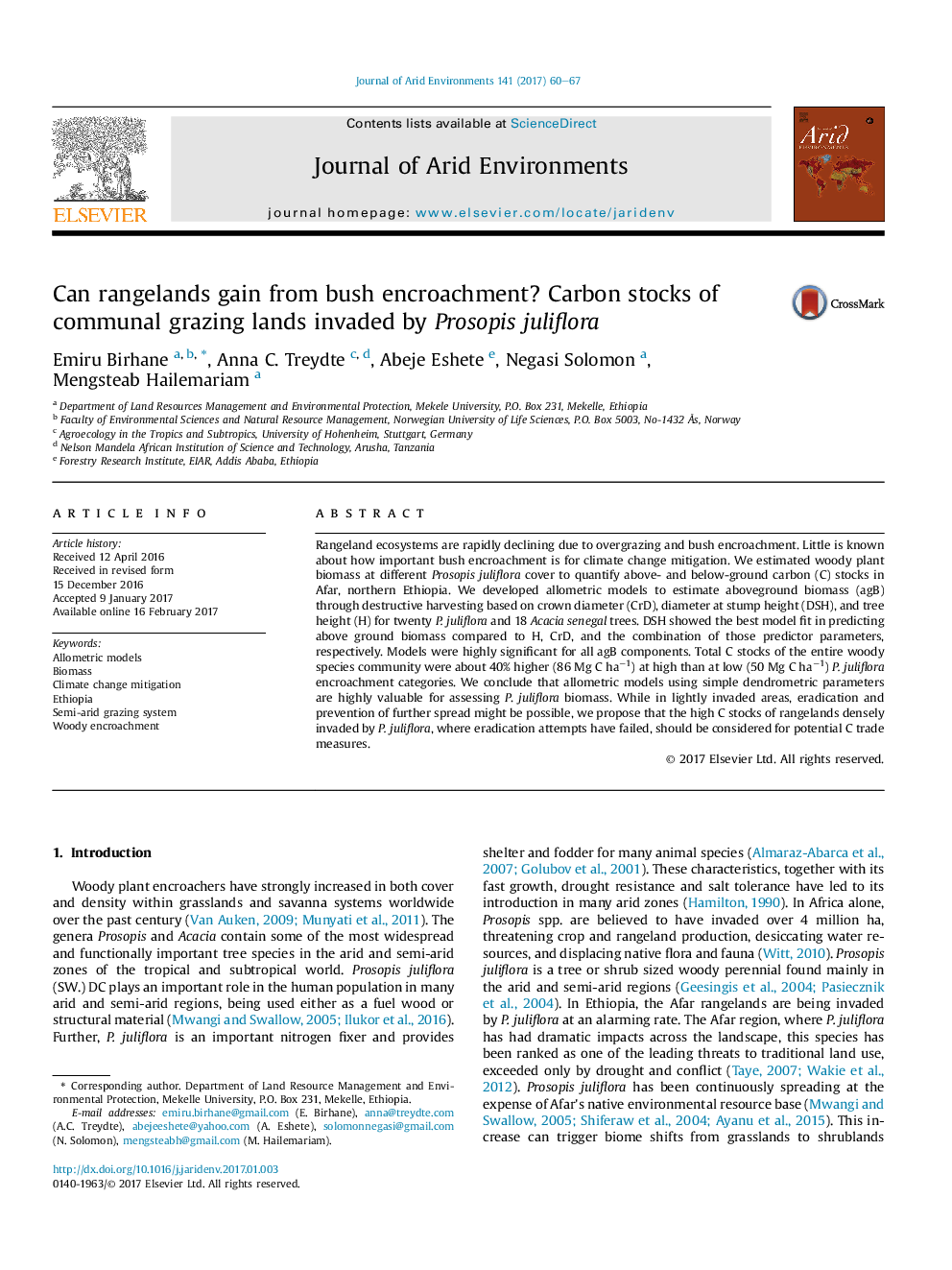| Article ID | Journal | Published Year | Pages | File Type |
|---|---|---|---|---|
| 5744311 | Journal of Arid Environments | 2017 | 8 Pages |
â¢We quantified Prosopis juliflora biomass through simple dendrometric parameters.â¢Stem diameter at stump height showed the best allometric fit to predict above ground biomass.â¢About 40% higher carbon stocks were found at high than at low P. juliflora invasion sites.â¢Soil organic carbon contributed most to overall carbon stocks in the Afar rangeland.â¢Bush-encroachment and carbon sequestration must be considered in climate change mitigation agendas of rangelands.
Rangeland ecosystems are rapidly declining due to overgrazing and bush encroachment. Little is known about how important bush encroachment is for climate change mitigation. We estimated woody plant biomass at different Prosopis juliflora cover to quantify above- and below-ground carbon (C) stocks in Afar, northern Ethiopia. We developed allometric models to estimate aboveground biomass (agB) through destructive harvesting based on crown diameter (CrD), diameter at stump height (DSH), and tree height (H) for twenty P. juliflora and 18 Acacia senegal trees. DSH showed the best model fit in predicting above ground biomass compared to H, CrD, and the combination of those predictor parameters, respectively. Models were highly significant for all agB components. Total C stocks of the entire woody species community were about 40% higher (86 Mg C haâ1) at high than at low (50 Mg C haâ1) P. juliflora encroachment categories. We conclude that allometric models using simple dendrometric parameters are highly valuable for assessing P. juliflora biomass. While in lightly invaded areas, eradication and prevention of further spread might be possible, we propose that the high C stocks of rangelands densely invaded by P. juliflora, where eradication attempts have failed, should be considered for potential C trade measures.
